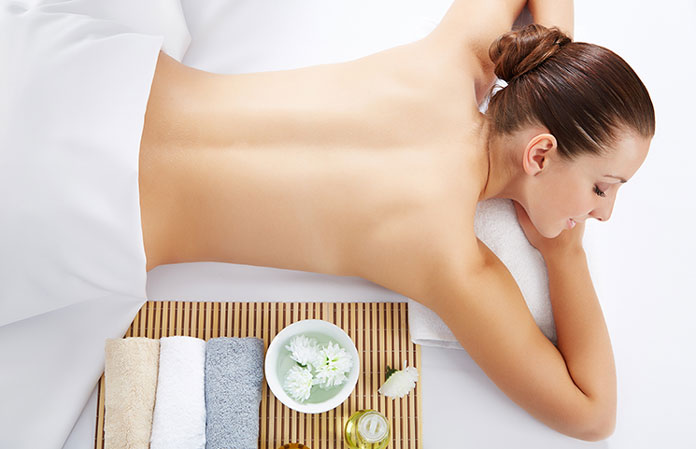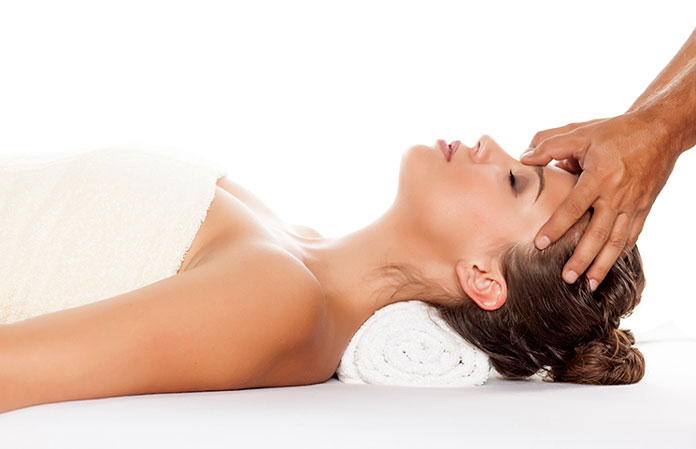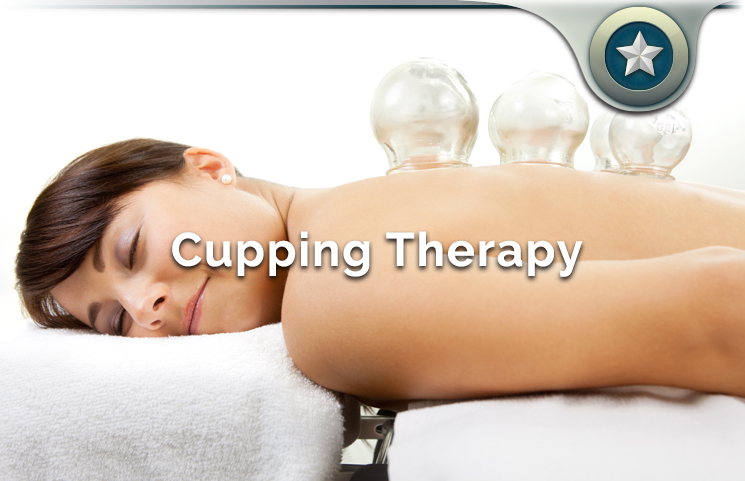Cupping is an alternative therapeutic method that can be used to treat pain, deep tissue scars in the connective tissue and muscles, swelling, and muscle knots. This is an ancient Chinese method that has been relatively unknown to most people in the West until recently.
Records have shown the method used to be quite popular in China around 1000 B.C, while varying records show it might even be older than 3000 B.C. The therapeutic method involves putting some cups on your back for a few minutes and then creating a vacuum in them. This creates a suction that pulls the muscles, skin, and body tissues upwards.
Cupping is still used in most traditional Chinese medicine (TCM) and even in Chinese hospitals on a regular basis. It is a new concept in the Western world, but people are starting to adopt it, mostly in the sports areas. Olympic swimming gold medalist Michael Phelps has recently admitted to using cupping, something that has created some fancy in the swimming industry.
Table of Contents
Other world class athletes have also claimed using it to make their bodies fitter and flexible for the rigorous running involved. Reports by Reuters showed that the sale of cupping therapy equipment rose by 20% the day Michael Phelps won the Olympic swimming gold.
The International cupping Association has also reported a 50% rise in the number of practitioners seeking certificates to conduct cupping. It is a great process that has been claimed to jumpstart the body’s natural healing process.
How Cupping Therapy Works
There are some concerns about its effectiveness, but its use since the ancient times would not have been done without proof of beneficial effects on the body. Through suction, the skin and body tissues beneath the skin are usually drawn up. This procedure is seen to be the reverse of a massage therapy where the skin is drawn inwards.
The vacuum in the cups is usually created by removing the air inside via a mechanical pump or by heating the cup and then subsequently cooling it. The aim is to create a vacuum such that the skin is pulled as nature tries to fill the space inside. The cup (cups in most instances) is usually left lying on the back for five to fifteen minutes as it sucks the skin beneath to the cup.
This is believed to help cure pain and other deep scars in the tissues. Most defenders of this method claim it is like a form of deep tissue massage. It helps one relax while improving the flow of blood to the skin.
From a scientific point of view, cupping is known to work by expanding the blood capillaries and increasing a number of fluids entering and leaving the tissues. Improved supply of blood and fluids helps the skin grow smooth and appear youthful.

The cups are usually made of the following:
- Bamboo
- Glass
- Silicone
- Earthenware
There are usually two methods through which cupping can be achieved. These are the dry and wet methods. In the dry method, the therapist puts a flammable substance inside the cup, sets it on fire, and puts the cup upside down on your skin as the fire goes out. The flammable substance can be herbs, alcohol, or simply plain paper.
The air inside the cups usually expands during the heating but will eventually cool as the fire goes out. This creates a vacuum in the cup and suction is created. The patient’s skin will then rise and redden as it is pulled and blood vessels expand. The cup is usually left on the skin for a few minutes.
The wet cupping method is a more modern one that uses a rubber pump instead of fire to create suction. In other cases, the therapist will use silicone cups that are easy to move along the skin, creating a massage like effect and covering more space on your back. Wet cupping is mild, but therapists can suck blood from your vessels by removing the cup and creating tiny cuts on your skin.
A second suction usually draws out small amounts of blood from the body. This should not worry you, your skin will look normal within 10 minutes. Antibiotic ointments or bandages are sometimes used after the cupping to prevent infections.
Wet cupping can sometimes be referred to as blood cupping, and is the most common cupping in the Middle East. We also have the moving cupping, which is similar to dry cupping but involves the application of massage oil on the skin first. The oil helps the cups glide over the skin with ease.
We shall soon see how wet cupping helps remove harmful substances and toxins from the blood as blood gets sucked out. This is the main reason for creating the tiny cuttings on the skin. In most cases, this method is done in combination with acupuncture, where needles are inserted first before the cups are placed over the skin.
Some people call this harmful, while the supporters of cupping say it is beneficial. The claims that it helps remove toxins and harmful substances are not proven, but this is not to dispute the fact that it has been used in ancient China and Egypt for thousands of years B.C. Further studies have shown that cupping combined with acupuncture is superior when compared to acupuncture done alone to treat pain in the muscles.
Benefits Of Cupping Therapy
Cupping may offer relief to various painful conditions in your body. It is used to treat knots in the muscles, deep tissue scars, and swellings in the muscles. The efficacy of this might be unproven, but people have claimed to benefit from its use greatly. According to the British Cupping Association, the therapy can be used to treat the following conditions:
- Fertility and gynecological issues
- High blood pressure in both men and women
- Various blood disorder issues like hemophilia and anemia
- Anxiety and depression
- Migraines
- Varicose pains
- Various skin problems like eczema and acne
- Rheumatic diseases
- Bronchial congestion caused by asthma and allergies
There is no evidence to confirm all this, but research is ongoing to discover more on how cupping works to deliver these numerous benefits. This procedure is gaining popularity with various actors and athletes who begin using it for various purposes.
Actress Gwyneth Paltrow has been reported to sing praises of cupping after appearing on the red carpet with cup marks on her back, calling the procedure amazing and relaxing. Other celebrities who are known fans of cupping include Jennifer Aniston, Lady Gaga, Victoria Beckham, and Jessica Simpson.
Even the likes of Andy Murray have reported using cupping together with other methods to help clear the stiffness around the back area.
Cupping helps remove toxins from the body and improve the flow of fresh blood, Qi, and lymph to all the affected areas throughout the body. This method has been reported to work wonders for people with flu, coughs, colds, muscle and back pain, and those suffering from depression. It should not be applied to inflamed areas.
Most validity claims of cupping are in the long history of its use that dates to over 3000 years. The lack of clinical studies on cupping is making it quite hard to prove the many honored benefits this method has been known to provide over the years.
Well, it has worked for millions of years on millions of people and can’t be just ignored. Here are five ways cupping can benefit you:

1. Helps Reduce Pain
Cupping is one of the safest natural ways to reduce muscle and joint pains. The procedure is known to release the deep tissues of the body and all tense muscles. This eases the stiffness that is usually associated with back and neck pains.
Fatigue, rheumatism, and migraines are also thought to emerge from the stiffness in the back region. It works great for athletes who use it to reduce muscle cramps, scar tissues, joint pains, and stiffness.
It targets the soft tissues by applying pressure on the painful areas. The increased blood flow to the tissues brings in the much-needed oxygen and nutrients. The cups are usually placed on the back areas, on the fleshy parts of the shoulders, around the lower back, by the neck, and over the loins/groins.
2. Promote Relaxations
By alleviating physical pains, cupping helps people enter a more relaxed state as this sedates the central nervous system. It might seem painful, just like acupuncture, but it does help you relax and lower stress and depression. The act of laying still itself is relaxing. By helping remove pressure and tension from the tissues, cupping feels soothing, making people feel at ease and relaxed.
3. Boosts Skin Health
Cupping has been shown to help relieve acne, eczema, cellulite, and skin inflammation. It further tones the skin by improving the flow of blood, making your skin appear youthful. The fact that it improves the flow of blood in the skin makes it appealing for people who want to have toned skin. The increased blood flow helps lower inflammation on the skin’s surface.
4. Treats Respiratory Issues And Colds
Cupping is known to speed up the recovery of common illness like flus and colds by nourishing the lungs and clearing away the congestion or phlegm.
By improving the flow of blood and lymphatic fluid throughout the body, cupping helps improve the immune system. This is why it helps lower asthma and allergy cases. Cupping was traditionally used to fight diseases like tuberculosis long before prescriptive medicines was introduced.
5. Improves Digestion
Cupping helps improve digestion by lowering the stress levels, which in most cases is tied to digestive problems. It helps reduce cases of common disorders like Irritable Bowel syndrome (IBS).
Throughout history, cupping has been found to be helpful to people with stomach pains, diarrhea, loss of appetite, and gastritis. Digestive disturbances in the regions of the navel, the bladder, and around the kidneys can also be cleared by this method.

Risks And Side Effects
Cupping therapy might appear dangerous to people who have never used it before, but rest assured cupping is mostly painless, especially when done by well-trained practitioners. During a cupping session, some heat and tightness around the cup are felt as the skin is pulled into the cup.
However, most people find this to be relaxing and soothing. Cupping has come a long way and improved regarding hygiene and safety standards. Sterile needs, gloves, and alcohol swabs are today used to avoid blood contamination as cupping goes to a global scale.
Cupping is a safe practice but must be performed by trained practitioners with a license who follow the registered guidelines. Dry cupping is one of the safest as it does not involve blood. The minimal side effects experienced when the cup touches the skin include:
- Burns
- Bruises
- Mild discomfort
- Skin infection
Cupping should be avoided in cases where the patient suffers from skin inflammation, skin infection, sensitivity, or ulcers.
It is also not recommended for pregnant women, since there is not enough research to show the side effects it might have on the baby and the mother. It should also be avoided in people with blood disorders usually prone to bruising and bleeding profusely.
Cupping Therapy Review Summary
Cupping is a common therapy that can be used together with the massage therapy, acupuncture, and essential oils. It is a great procedure that can help reduce pains, boost the skin health, promote relaxation, and treat respiratory diseases like cold and flu.
It is an ancient procedure, but one that is becoming widely accepted in the Western world as people realize the immense benefits it has to offer. It is a similar method to acupuncture and works by drawing energy and blood to areas of the body that need it the most.
It is always advised that you talk with your doctor before starting any cupping or any other form of alternative medicine.
You also need to talk with your cupping therapists extensively asking about their training, experience, and the conditions they use cupping for, together with any reasons why you should not use cupping. It is always good to be greatly informed about cupping before engaging in the procedure.









